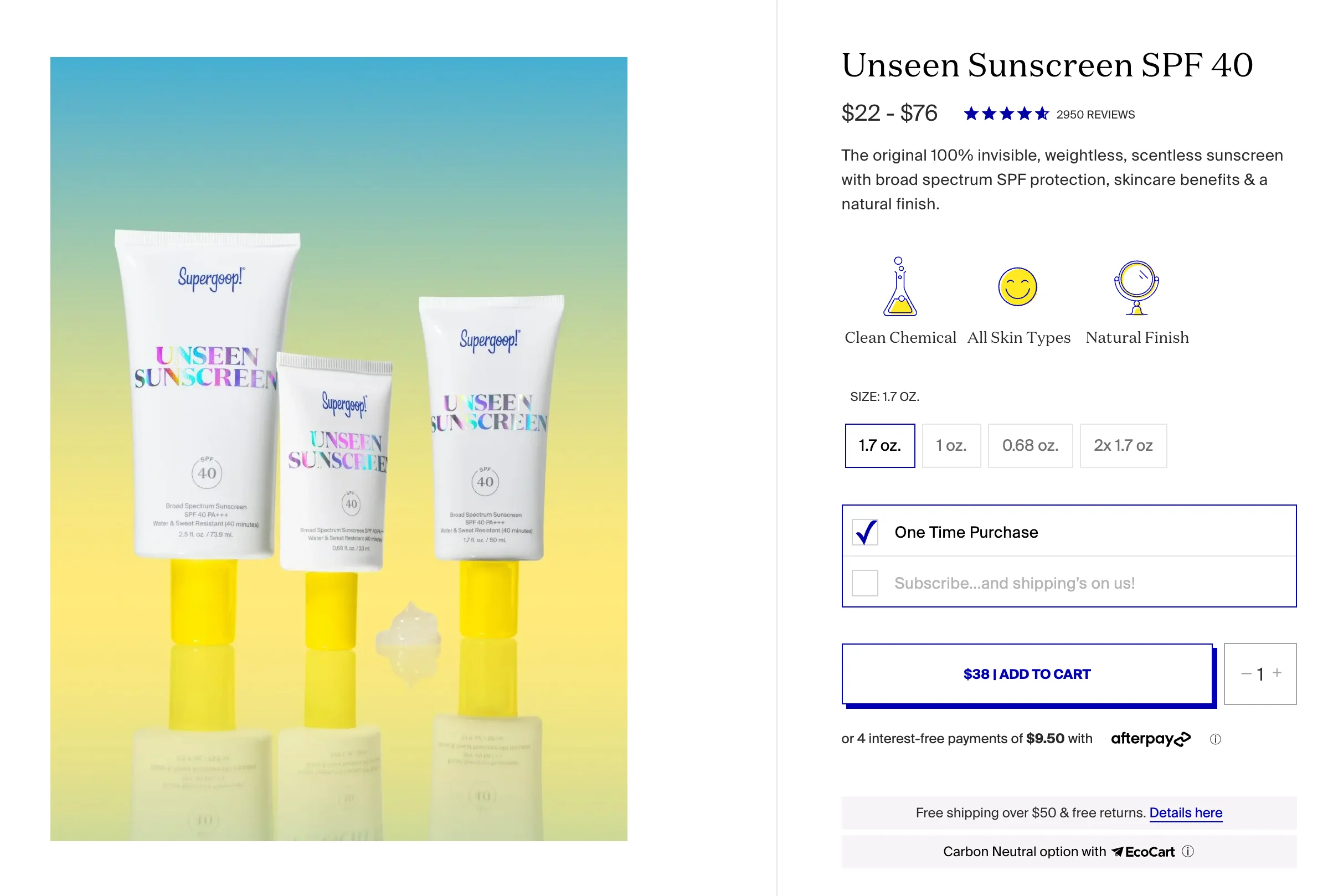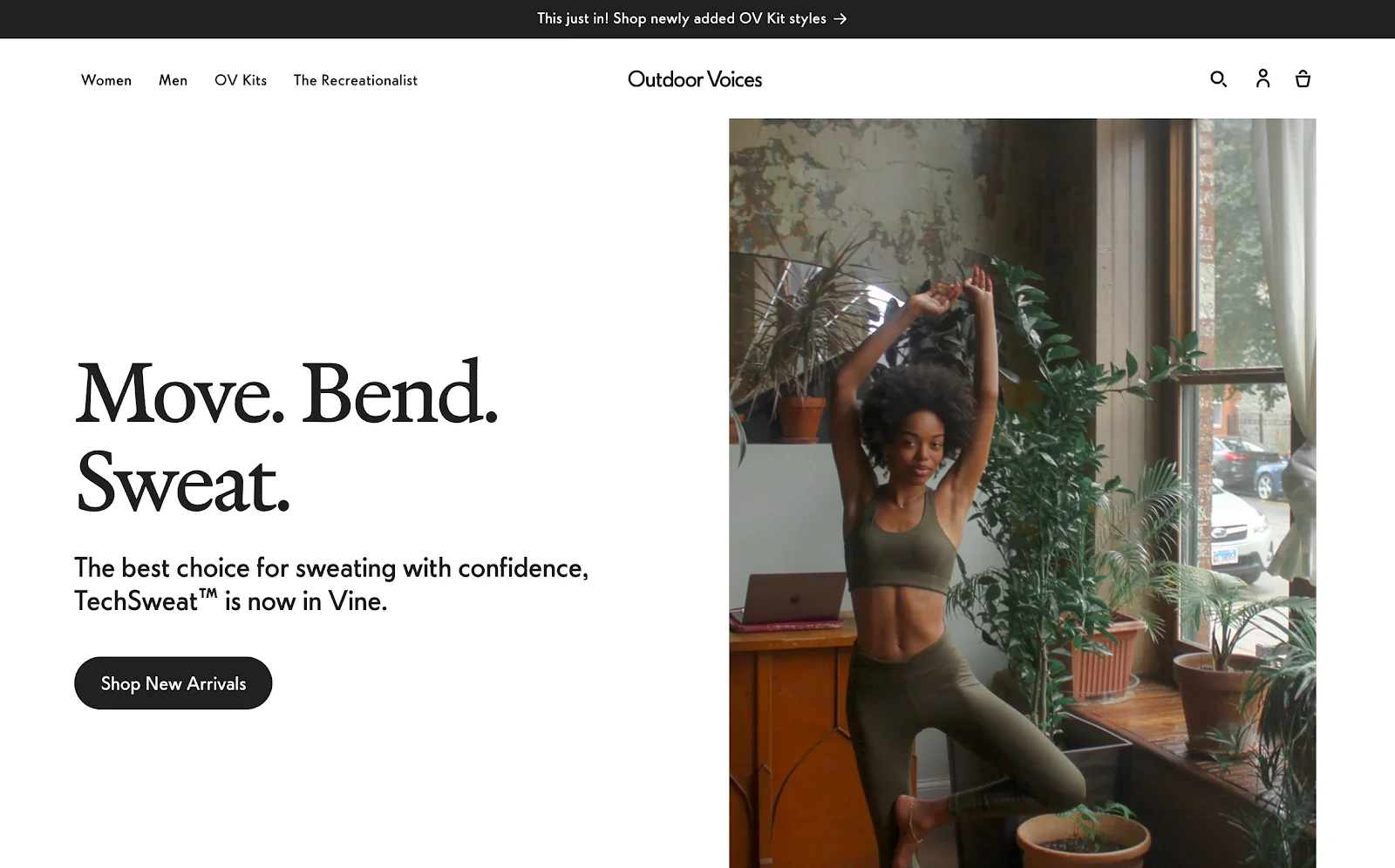Attractive and unique ecommerce website design has always played a key role in a successful online sales and marketing strategy. In fact, studies have shown that it takes 50 milliseconds for visitors to decide if they'll stay on an ecommerce site or not. You get only an instant to impress users, which is why website design is so important for your ecommerce business. Whether you're about to create your first online store or you're redesigning your current site, this guide is for you. Browse examples of great ecommerce websites, tips for choosing the right ecommerce platform, and advice to get your online business looking its best.
1. Building trust with customers
When someone visits your ecommerce store or website for the first time, they may not know anything about your brand, the quality of your products, or your commitment to making customers happy. Deals might earn their consideration, but they'll need to trust you before they actually go through with a purchase.
Customer trust is hardest to earn when you don't have any customers, so you'll want to incorporate the following trust indicators as you build your website.
Contact information
Include an email and, if possible, a phone number and a mailing address on a contact page and in the footer of your site. This type of information, along with an about page, helps potential customers feel they're buying from a real person.
A return policy
A return policy not only makes it easier for people to send back products that don't satisfy them, it actually increases sales by lowering shopping cart abandonment and instilling the customer with a sense of confidence and trust that they can send back an item if they need to, without any transaction fees.
Not only does Supergoop have a comprehensive returns page and self-directed returns portal, it also boasts its free returns policy on every product page.

Technical certifications
By adding Shopify Payments to your ecommerce website, you'll have access to advanced features and payment services featuring the latest security technology for protecting your customers' information. Add graphics or badges to show your security compliance and all the payment methods you accept.
Customer reviews and testimonials
Many ecommerce solutions have app integrations that let you import content into your site. This includes customer photos, your Instagram feed, and even customer reviews. These are signals to potential customers that your brand is trustworthy.
2. Creating a visually compelling experience
Perception is everything when selling your products online. People form their first impression of your ecommerce store in mere milliseconds. Making that impression count rests largely on high-quality images, consistent branding design, smart use of psychological design, and a clear visual hierarchy.
Here are some best practices for each of these elements:
- Photography: Product photography is like an ambassador, sharing the promise of your product online. Shoot product photos on a plain background and in many angles. Lifestyle photos are important to show your product in use and in context within an environment. They also reinforce a brand aesthetic.
- Color: Color is one of the most powerful tools you can use to spark interest and emotion on your ecommerce site. It can also be used to draw attention to specific sections of your website and lead the customer journey. Smart use of color can help with accessibility, too.
- Fonts: While the words you write on your ecommerce site share information, it's the typography that communicates the emotion behind that information. It's a good idea to stick to two fonts and create a hierarchy between them. Choose one font as your header or title font and another to be your body font.
- Psychological design and visual hierarchy: Using psychological design principles allows you to influence customers' decisions and guide their eyes with strategically placed elements, colors, and text.
Outdoor Voices' homepage features lifestyle images to communicate its brand aesthetic and an aspirational lifestyle. It focuses on limited fonts for a clean look and a clear visual hierarchy.

3. Focusing on responsive design across devices
The average American spends 4 hours and 37 minutes on a mobile phone each day. Luckily, if you're building your business with Shopify, your store is already responsive. This means the site is user friendly on different devices and screen sizes, whether customers view it on a desktop, smartphone, or tablet.
When choosing an ecommerce website design based on mobile optimization, it's best to personally test it to see if you're happy with the transactional flow. If you're not, there's a good chance your customers won't be either.
4. Designing clear site navigation
Your website navigation should help customers find your products quickly and easily. Good navigation also helps improve SEO on your site so you get found in search results.
Stick to only a few menu headers in your top-level navigation. Be clear and direct when labeling these headers—this is no time to be clever. Key headers to include in your top-level navigation could include:
- Shop
- About Us
- Bestsellers
- Contact Us
